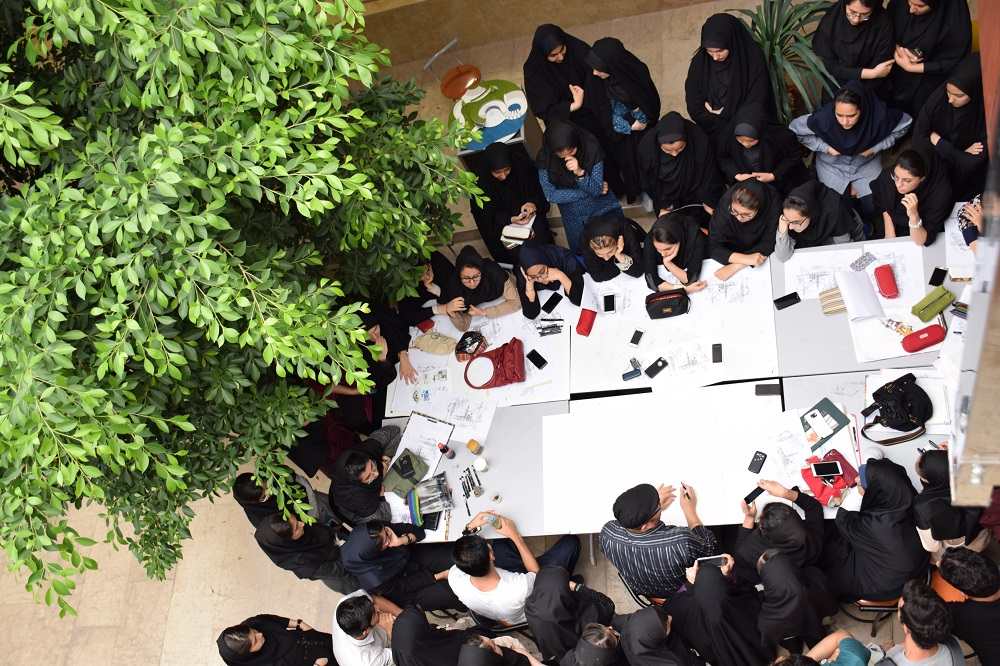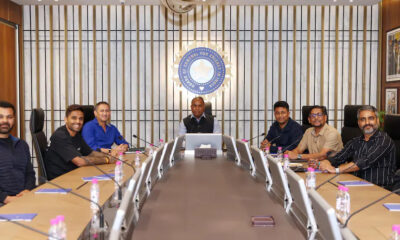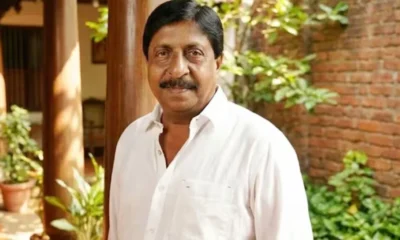Latest world news
“Iranian history, literature most sought-after”
Published
9 years agoon
By
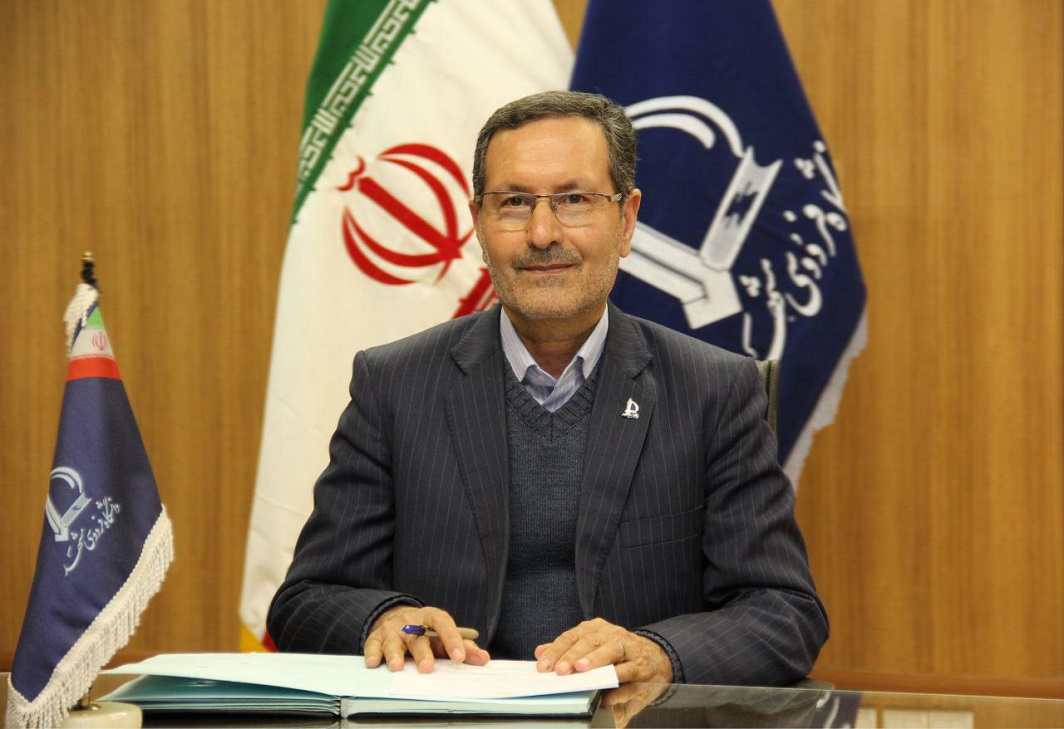
[vc_row][vc_column][vc_column_text]Ferdowsi University of Mashhad was established in 1949, and with nearly seven decades of a brilliant academic record, research and cultural history, it is currently one of Iran’s top three universities and also the largest centre of higher education in the northeast of Iran. Professor Mohammad Kafi, president of the university, spoke to Shailaja Paramathma in an email interview about institutes of higher education and the student life in Iran. Excerpts from the interview:
The Ferdowsi University of Mashhad (FUM) offers 180 bachelors, masters and PhD programs in the field of engineering, humanities and various sciences. Which are the most sought-after courses?
All the courses and programmes are of standard scientific level at the university and many students from several countries are studying in different disciplines. However, programmes associated with humanities, such as Iranian history and literature, are more sought-after. Courses in chemistry, electrical engineering, mathematics, agronomy and food sciences are also excellent compared to other universities in Iran.
How many foreign students and from which countries seek out FUM, in particular, and other Iranian universities, in general, for higher education?
With 1,500 foreign students from 20 countries, FUM has the largest number of international students among Iranian universities. Main countries that send their students to FUM are neighbouring countries like Iraq, Afghanistan, Tajikistan, and Lebanon. European and East Asian countries also select our university for courses in Persian language as well as for Iranian history and humanities courses. The same pattern holds true for other Iranian universities.
There was a time, around two decades ago, when the Iranian government offered substantial scholarships to Indian students to pursue higher education in Iranian universities. It has now stopped. What is the reason behind it?
These have stopped from our side. At present, all foreign students, including Indian applicants, can apply for scholarship through the Iranian ministry of science and technology. The university authorities can also offer some discount in tuition fee for meritorious students. But, generally speaking, we do not use our capacity for student exchange.
What is the vision of the universities in the long run to attract more foreign students? Is making English the medium of instruction going to be one of them?
In this regard, we have established an International Centre for Teaching Persian to Non-Persian Speakers. Undergraduate students are strongly encouraged to undergo a three- to six-month Persian language learning programme before they start their study. However, for graduates, many of our scientists are well-familiar with English as a second language and there is no problem in communicating with foreign students. We are also trying to offer some courses in English as well as the possibility of writing the dissertation, too, in English for international post-graduate students.
Mashhad is also known as “Iran’s spiritual capital”. How does the Ferdowsi University of Mashhad, named after the laureate of Persian literature, poet Ferdowsi, serve to keep that link alive in its everyday life?
On one hand, Persian literature is mixed with spirituality and, on the other, Islam accords importance to science and literature. The faculty of theology and the faculty of literature at FUM are among the top and the most famous faculties in Iran. Furthermore, families nationally and internationally select Mashhad due to this advantage for their children to study.
Culturally, how is the everyday life of a student coming from a country like India different in Iran?
Iranian hospitality is world-famous and all the students from around the world take back good memories from their stay in Iran. High living standards, cleanliness, welfare and safety besides plenty of customs and cultures are the highlights of life in Iran. Visiting places of historical value is another.
How do you keep in touch with your foreign students after they graduate? The fee that they pay would be higher than that for a local student, how is your alumni program’s outreach for a foreign student?
FUM is establishing an alumni association in which communication among graduates and university and other programs are planned. The tuition fees are competitive and there is hardly any difference in the fee structure between self-financed Iranian students and the international students.
Iranian economy is at present at an all time high; the sanctions have been lifted and the overall approach is more business-oriented. How come the assistance that the Iranian government used to give to its own students to study in India has now trickled to a minimum? What is the reason behind it?
After the lifting of sanctions, the Iranian government has envisaged many development programmes in various sectors. Supporting students to study at top universities all over the world will be one of the development programs. At the moment we have more than 4,000 Iranian students studying in various Indian universities. The main reason for reduction in this number is the increasing availability of seats in domestic universities. Some other factors to be considered are living expenses, student visa, and the time-consuming procedure for getting admission abroad.
The School of Architecture at the University of Tehran and the Sharif University of Technology in Tehran impart a few of the-best rated courses in their said fields. How important is it for a foreign student to know Persian to pursue these courses and does lack of that knowledge deter them from joining?
We encourage all applicants to learn Persian before starting their main courses so that they are able to communicate with people in the society, particularly those who are interested in pursuing Islamic architecture. However, universities are ready to offer courses in English if the number of foreign students is considerable. As I said earlier, for graduate students who are taking fewer subjects and are fewer in number in each course, teaching in English is more feasible. Now our faculty of architecture has ranked fourth amongst Iranian architecture faculties and we invite Indian applicants to pursue their studies in FUM.
Courses in entrepreneurship seem to be the next big thing in Iran. Tell us more about these courses and why students are attracted to them.
Today, universities are trying to provide courses and facilities to students to help them learn skills and gain experience, so that they can enter the job market upon completion of the study. FUM centres for entrepreneurship, incubator and innovation centres are in the chain for doing this mission, but still we are very far from the goals that we have aimed for.
You spent more than three years in India as the scientific counsellor at the Iranian Embassy in New Delhi and travelled extensively to the rest of India. What is your fondest memory of India?
India is a great country and there is always something for everybody that attracts and appeals to them. For me, India has plenty to offer, like its deep sense of culture in everyday life, neutrality, respect to elders and family, and simplicity of living.[/vc_column_text][/vc_column][/vc_row]
You may like
-


John Abraham says he will never make hyper nationalistic films like The Kashmir Files or Chhaava
-
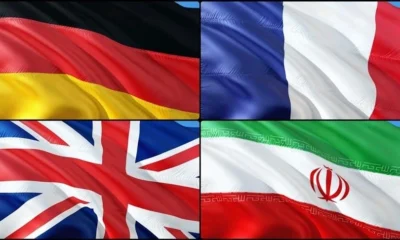

Iran says ready to discuss nuclear deal with UK, France, Germany
-


Tehran dismisses Trump’s claims on Khamenei assassination, criticizes US-Israel actions amid nuclear site bombings
-
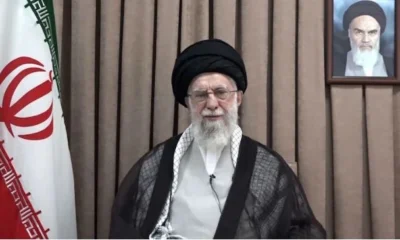

Iran’s Khamenei warns of ongoing punishment after US bombs key nuclear sites
-
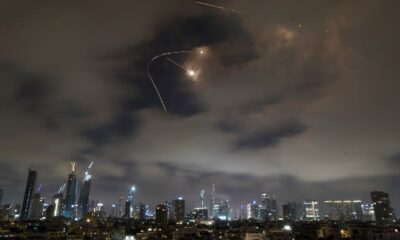

US bombs 3 nuclear sites in Iran
-
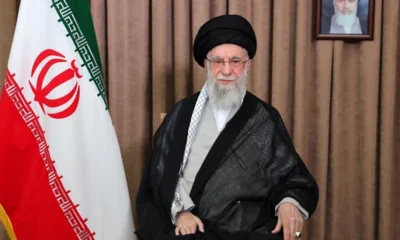

As Israel depletes missile interceptors, Khamenei says Iran won’t give in to pressure
Latest world news
Hindu man lynched and set on fire in Bangladesh during anti-India protests
A Hindu man was lynched and set on fire in Bangladesh’s Mymensingh district amid rising anti-India protests after the death of a radical student leader.
Published
2 days agoon
December 19, 2025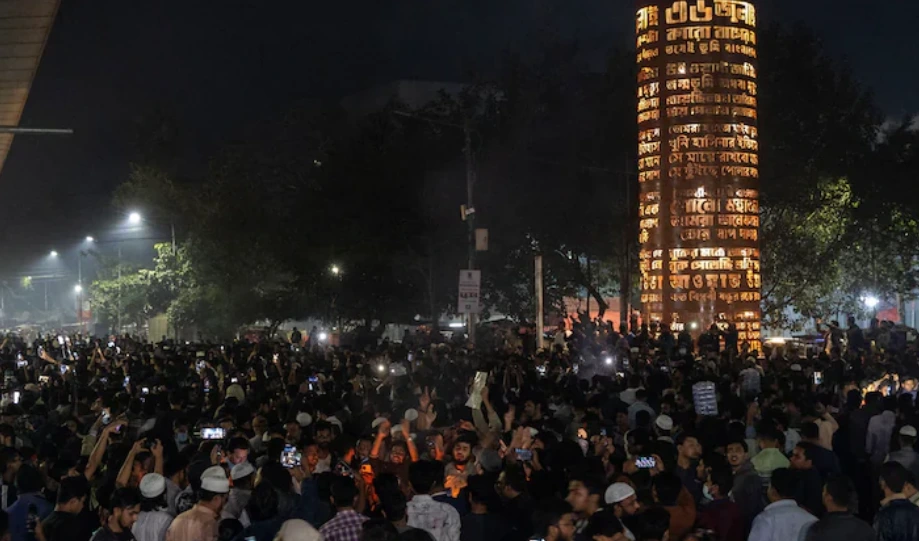
A disturbing incident of mob violence against a minority community has been reported from Bangladesh, where a Hindu man was lynched and his body set on fire amid escalating anti-India protests following the death of a radical student leader.
Mob lynching reported from Mymensingh district
A 30-year-old Hindu man, Dipu Chandra Das, was lynched by a mob in Bhaluka Upazila of Mymensingh district after allegations surfaced that he had insulted Islam. According to media reports, the incident took place on Thursday night at an industrial area where Das was employed.
Das was accused of making derogatory remarks about Islam and Prophet Muhammad during an event organised at his workplace to mark World Arabic Language Day. The allegations spread rapidly within the factory premises and nearby areas, leading to heightened tension.
Eyewitness accounts cited in media reports said Das was assaulted by an angry crowd and died on the spot. After his death, the mob allegedly tied his body to a tree, beat it while raising slogans, and later set it on fire.
Body burnt at multiple locations, traffic disrupted
The violence did not stop there. Reports suggest the mob later moved Das’s body to a nearby bus stand area and again set it ablaze. Subsequently, the body was taken to the Dhaka–Mymensingh highway, where it was burned once more, leading to panic among locals and a temporary disruption of traffic on the busy stretch.
Confirming the incident, the local administration said a person was killed following allegations of insulting the Prophet. Officials added that the body has been taken into police custody and the situation is being monitored.
Interim government condemns violence
The lynching took place against the backdrop of widespread protests across Bangladesh following the death of Sharif Osman Hadi, a prominent leader linked to the July Uprising. The Muhammad Yunus-led interim government strongly condemned the killing, stating that there is no place for such violence in the country.
In an official statement, the government appealed to citizens to reject hatred and violence, stressing that those responsible for the crime would not be spared.
Anti-India sentiment intensifies after Hadi’s death
Tensions have been high in Bangladesh since Hadi’s death, with protests, vandalism and arson reported in several cities. Demonstrators targeted prominent media offices and symbolic locations linked to the country’s political history.
Hadi was known for his sharp criticism of India and the former prime minister, whose government was ousted during last year’s uprising. Groups formed after the political upheaval have been actively mobilising street protests and campaigns that fuel anti-India sentiment, particularly after the former premier went into exile in India.
The lynching of Dipu Chandra Das has further raised concerns over the safety of minority communities amid the ongoing unrest in the country.
Latest world news
Bangladesh rocked by violent protests after student leader Sharif Osman Hadi’s death, anti-India slogans raised
Bangladesh has witnessed widespread violence and protests following the death of student leader Sharif Osman Hadi, with arson, anti-India slogans and a nationwide security clampdown.
Published
3 days agoon
December 19, 2025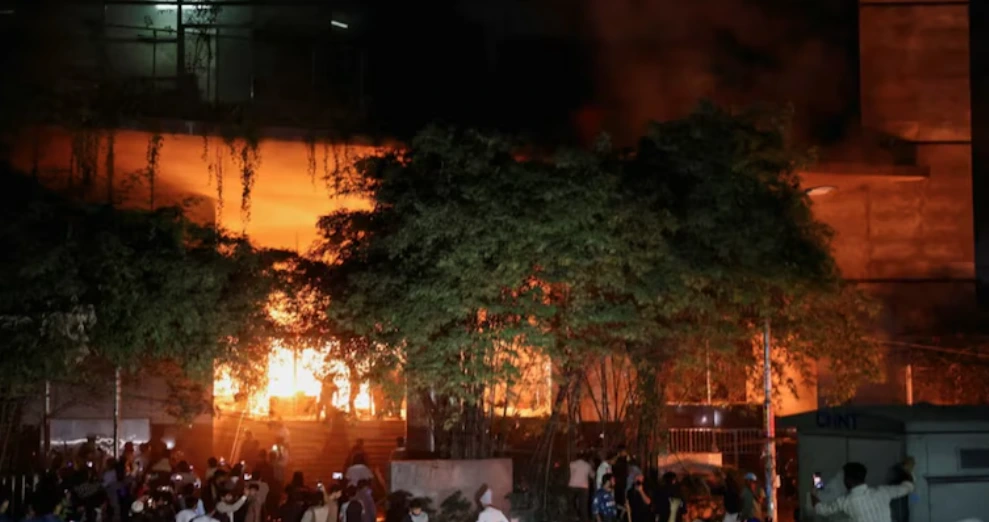
Violent protests erupted across Bangladesh after the death of student leader and political figure Sharif Osman Hadi, triggering fresh instability in the country and a sharp rise in anti-India sentiment. The situation turned volatile in Dhaka and several other cities as thousands of demonstrators poured onto the streets demanding swift action against those responsible for his killing.
Hadi, 32, was shot in the head by masked assailants while launching his election campaign in Dhaka last Friday. He was later airlifted to Singapore for treatment, where he succumbed to his injuries. Known for his polarising views and strong anti-India rhetoric, Hadi had emerged as a prominent face during the 2024 student uprising that led to the ouster of former prime minister Sheikh Hasina.
Fires, arson and tense streets in Dhaka
Soon after news of Hadi’s death broke, protests intensified in the Bangladeshi capital. Several buildings, including those housing leading media organisations, were set on fire, with authorities confirming that staff members were trapped inside during the blaze. Fire services later said the situation was brought under control, while security forces were deployed in large numbers to prevent further violence.
Demonstrators were seen chanting slogans invoking Hadi’s name, vowing to continue protests until those behind the attack were arrested. Multiple areas in Dhaka remained tense late into the night as police and paramilitary units attempted to restore order.
Protests spread, Indian mission targeted in Chittagong
Violence was not limited to the capital. In the port city of Chittagong, protesters gathered outside the Indian Assistant High Commission, raising anti-India slogans amid heightened anger on the streets. Similar unrest was reported from other parts of the country, signalling the widening scale of the crisis.
In Rajshahi, demonstrators torched Bangabandhu Sheikh Mujibur Rahman’s residence and an Awami League office, causing extensive damage. Authorities have not yet released a detailed assessment of losses, but security has been tightened across sensitive locations.
Anti-India sentiment deepens diplomatic strain
The latest unrest comes amid deteriorating ties between India and Bangladesh following Sheikh Hasina’s flight to Delhi. Earlier in the week, protesters under the banner of “July Oikya” marched towards the Indian High Commission in Dhaka, demanding Hasina’s return and raising hostile slogans against India.
India has formally conveyed its concerns to Dhaka over threats to its diplomatic missions and inflammatory statements by Bangladeshi political figures. New Delhi has rejected allegations linking India to the attack on Hadi, calling such claims false and misleading.
Yunus calls for calm, state mourning announced
In a televised address, interim chief Muhammad Yunus described Hadi’s death as an “irreparable loss” to Bangladesh’s political and democratic space. He urged citizens to exercise restraint, warning that continued violence could derail the country’s path towards a credible election.
The interim administration has announced a day of state mourning in Hadi’s honour, with national flags to fly at half-mast and special prayers planned nationwide. Bangladesh has been under an interim government led by Yunus since August 2024, with national elections scheduled for February 12.
India issues advisory for its nationals
Amid the unrest, the Indian High Commission in Dhaka issued an advisory asking Indian nationals in Bangladesh to avoid non-essential travel and limit movement outside their residences. Emergency contact details of Indian missions have been shared for assistance.
Manhunt launched for attackers
Bangladesh police have launched a manhunt for those behind Hadi’s killing, releasing photographs of two suspects and announcing a reward of five million taka for information leading to their arrest. Yunus has described the attack as a premeditated attempt by a powerful network to sabotage the electoral process.
Latest world news
India closes two more visa centres in Bangladesh amid worsening security concerns
India has temporarily closed visa application centres in Rajshahi and Khulna, citing security concerns following protests near Indian establishments in Bangladesh.
Published
3 days agoon
December 18, 2025
India has shut two additional Indian Visa Application Centres (IVACs) in Bangladesh — in Rajshahi and Khulna — citing the prevailing security situation in the country. The move comes a day after protests were held near the Indian High Commission in Dhaka by radical groups, raising concerns over safety around Indian establishments.
An official notification issued on the IVAC website said the centres in Rajshahi and Khulna were closed on December 18 due to security reasons. Applicants who had appointments scheduled for the day have been assured fresh slots at a later date.
The decision follows the temporary shutdown of the visa application centre in Dhaka earlier, even as New Delhi flagged a rise in open hostility towards India, particularly targeting the northeastern region, under the interim government led by Muhammad Yunus.
Bangladesh rejects India’s security assessment
Bangladesh’s Foreign Affairs Advisor Touhid Hossain dismissed India’s concerns and denied any deterioration in law and order. He distanced the interim administration from recent inflammatory remarks made by National Citizen Party (NCP) leader Hasnat Abdullah, who had publicly threatened to cut off India’s “seven sisters” and also issued comments against the Indian High Commissioner.
Hossain said the individual was not part of the government and termed his statements irrelevant. He also claimed that security arrangements were in place and that the shutdown of the Dhaka visa centre coincided with a local programme, which raised security-related questions.
Political backdrop and India’s response
The NCP, which emerged from student-led protests that led to the fall of the previous Awami League government, has extended support to the Yunus-led interim setup. Though the party has limited political presence, radical elements associated with it have organised anti-India demonstrations in Dhaka.
India, in an earlier statement, urged the interim government to ensure internal law and order and hold peaceful elections so that Bangladesh can return to an elected administration. However, the interim government appeared dismissive of this advice, with Hossain stating that India need not advise Dhaka on conducting elections.
Observers in Bangladesh have pointed out that delays in elections could benefit the unelected interim government, while radical groups may attempt to create disruptions by projecting India as a hostile actor. New Delhi has so far maintained a measured stance, despite remarks that directly question India’s sovereignty and territorial integrity, particularly in the northeastern region.

India announces T20 World Cup 2026 squad, Shubman Gill dropped as Axar Patel named vice-captain

Veteran Malayalam actor and filmmaker Sreenivasan passes away at 69

T20 World Cup 2026: Selectors weigh Shubman Gill role as India squad announcement awaited

Thick smog engulfs Delhi, flights and trains delayed as air quality slips to very poor



